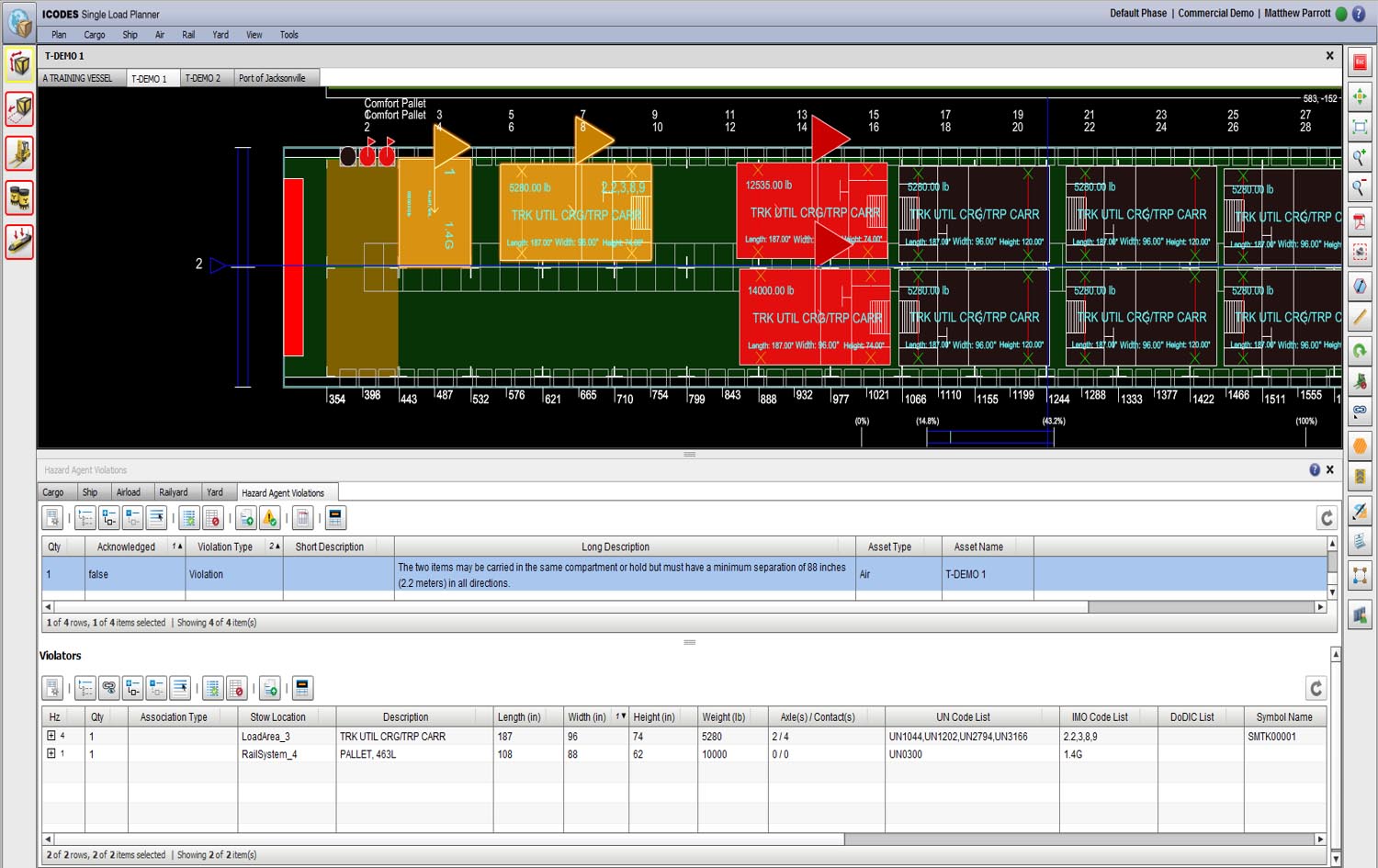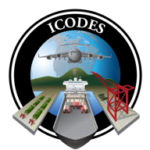All supply chains focus on keeping costs down by optimizing their existing processes and systems. As the world becomes more complex, however, today’s systems have trouble keeping up with the demand to expand services and processes. As a result, organizations are leveraging the power of service-oriented architecture (SOA).
SOA gives organizations the agility and flexibility to connect legacy systems with new applications, saving time and money. In essence, SOA makes existing resources more productive and helps supply chains manage increasingly complex infrastructures.
Service-oriented architecture is by no means a new concept in the software industry – especially in the defense industry. The U.S. Department of Defense (DoD) has relied on SOA for over 20 years to optimize its load-planning processes. While many claim that SOA is outdated, it is becoming more relevant than ever. In fact, SOA is alive and well and remains a solid foundation for enterprises.
As its name implies, service-oriented architecture is made up of loosely coupled “services” that are somewhat related but can also work independently to manage processes and create order. It is a cost-effective way to add new capabilities to an enterprise-level system, for instance, without causing disruption to business processes that are using the existing capabilities of the system.
The services within the SOA environment are designed to perform basic functions. Combining these functions into a service-oriented architecture not only allows a system to execute highly complex computational tasks, but also extends the lifecycle of legacy systems. This, in turn, fills in functional gaps tailored to specific capabilities, allowing business processes to evolve.
Similar to the concept of Lego Blocks, SOA facilitates easy connectivity to other applications – allowing users to add and enhance components over time.
THE FRAMEWORK FOR MILITARY LOAD PLANNING
The modular, component-based SOA architecture is at the heart of the DoD’s load-planning system, known as the Integrated Computerized Deployment System (ICODES). The DoD adopted ICODES in the late 1990s when it recognized the need to consolidate the various maritime load-planning systems into one integrated computerized system. After reviewing several options, they found their solution with ICODES, developed by Tapestry Solutions, Inc.
Built from the ground up with SOA, ICODES was designed to address the complexities inherent in military load-planning – a process that involves the strategic placement of cargo and personnel as well as route optimization. As with commercial supply chains, the goal is to reduce transportation costs, save time and ensure the safety of cargo and personnel.
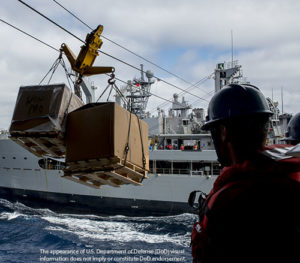
U.S. Navy photo by Mass Communication Specialist 3rd Class Nick Cerilli.
Load-planning is extremely complex for the military, which probably moves more freight than any other private enterprise or civilian operation, noted Stephen Goodman in his article, Strategic Load Planning.
“Basically, if America’s warfighters can wear it, eat it, drive it or shoot it, military logisticians are responsible for getting it to them,” Goodman explained.
More specifically, transporting military assets from the U.S. to overseas locations involves moving a vast amount of cargo – everything from vehicles, weapon systems, ammunition to communication assets, fuel and food supplies – by land, air and sea. It also involves the staging of military personnel.
Transporting the cargo safely and efficiently all begins with load-planning. “During load-planning, the loadmaster plans how to optimize the cargo space within an aircraft or container ship,” Goodman explained. “Overall, it is the responsibility of the loadmaster to ensure that the load can be safely carried by the transport, and on-loaded and off-loaded quickly and efficiently.”
MANAGING UNCERTAINTY, COMPLEXITIES IN THE THEATER OF WAR
In the theater of war, load-planning is compounded by uncertainty, complexity and information saturation. It typically involves several modes of transportation, last-minute cargo changes and hazardous conditions, according to the white paper, ICODES: A Load-Planning System That Demonstrates the Value of Ontologies in the Realm of Logistical Command and Control.
Oftentimes, there is a need for frequent re-planning due to changes in priority or as routes in the theater become temporarily unavailable due to inclement weather or enemy activities.
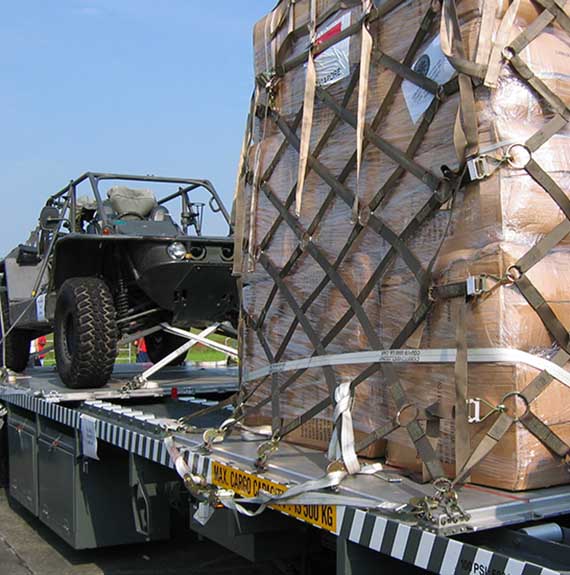 With continuous information changes and problems that arise during load-planning, commanders are saturated with a wealth of data in dynamically changing situations. They need access to timely and accurate information – actionable data they can easily understand and quickly exploit to make important decisions. Commanders also need complete situational awareness.
With continuous information changes and problems that arise during load-planning, commanders are saturated with a wealth of data in dynamically changing situations. They need access to timely and accurate information – actionable data they can easily understand and quickly exploit to make important decisions. Commanders also need complete situational awareness.
This requires a system that enables in-transit visibility, speed, extensive documentation accuracy, security, and above all else, automatic reasoning and analysis capabilities. Since shipments can be impacted by many factors during combat operations, the system must be adaptive and responsive.
To effectively address these complexities, it was necessary to find a flexible, modular solution that would consolidate all this data, and find solutions to problems as they arise. The solution should incorporate “intelligent software capable of analyzing the large amounts of data … and most importantly the extensive relationships that bind these components together,” according to the white paper.
AN INFORMATION-CENTRIC SYSTEM
With service-oriented architecture, the ICODES solution includes “expert software agents with automatic reasoning and analysis capabilities,” according to Dr. Jens Pohl, Chief Technology Officer, Tapestry Solutions. It was one of the nation’s first examples of “information-centric” military decision-support systems.
Its SOA interface allows “each service to be utilized in a manner that ensures that the end-product of one service becomes the starting point of another service,” asserts another white paper, Knowledge Management Enterprise Services (KMES) Concepts and Implementation Principles. This defining characteristic of service-oriented architecture enables a continuous flow of information, supporting multiple transportation and general logistics operations.
To be as flexible as possible, an SOA environment is “highly modular, platform independent, compliant with standards, and incorporates mechanisms for identifying, categorizing, provisioning, delivering, and monitoring service,” according to the white paper, authored by Dr. Pohl.
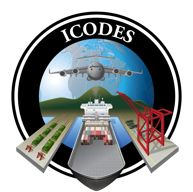 The modular software suite within ICODES, for instance, enables individual applications to work together and provide an array of capabilities. Each application performs specialized functions configured to interact with other applications either automatically or under the users’ direction.
The modular software suite within ICODES, for instance, enables individual applications to work together and provide an array of capabilities. Each application performs specialized functions configured to interact with other applications either automatically or under the users’ direction.
The interoperability between applications is a key design feature of the ICODES suite, providing a flexible and comprehensive platform for the DoD and commercial users. The SOA architecture promotes better collaboration between users and its services. This ensures all stages of load-planning are managed effectively and efficiently.
ICODES: A DoD SYSTEM OF RECORD
ICODES has emerged as a system of record, serving as the single load-planning capability for the DoD. Among its functions, ICODES provides near real-time planning and tracking of cargo stowage for air, ocean, rail, and truck, allowing users to easily exchange and interpret global cargo movement plans. It also optimizes logistics operations for the day-to-day management of transportation terminals and provides predictive analysis for future operations.
Today, over 20,000 users rely on ICODES to create effective and efficient load-plans for vessels, aircraft, railcars and trucks/trailers. With is automatic reasoning and analysis capabilities, ICODES enables users to monitor various stages of the load-planning process and suggests solutions to existing and potential problems. For example, it provides notifications of issues such as weight imbalances and improperly stowed hazardous materials.
Its commercially available modules, called GOLDesp Load Planner and GOLDesp Terminal Manager, are also gaining popularity in non-DoD markets.
Because it is based on SOA concepts and design principles, ICODES’ functionality continues to expand – allowing users to quickly adapt to the fast-paced, mobile landscape within supply chains. Above all, ICODES helps commanders make sense of volumes of data, so they can make better decisions faster when every second counts.
The appearance of U.S. Department of Defense (DoD) visual information
does not imply or constitute DoD endorsement.
Contact:
Janet Dayton
Tapestry Solutions Inc.
tapestrymarketing@boeing.com
